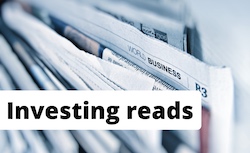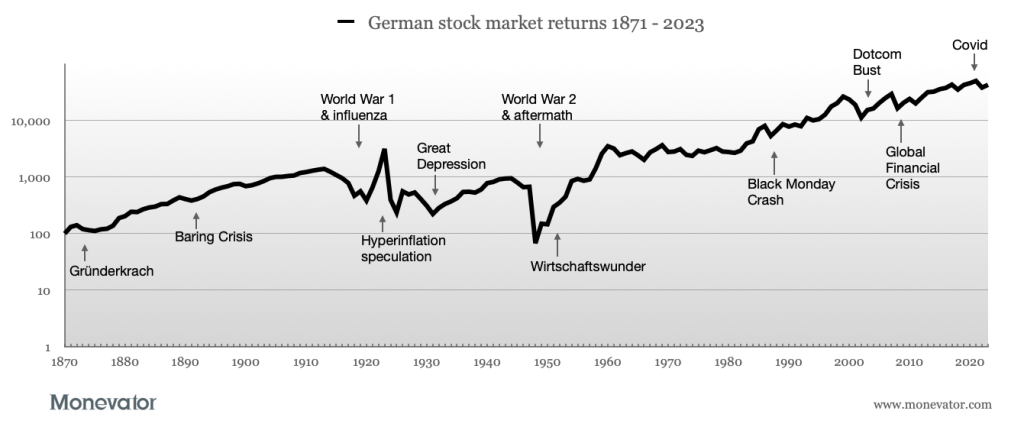
Sometimes in investing you find yourself going nowhere. It’s both dull and unsettling at the same time – like being trapped in ice on a wooden sailing ship. Stuck fast, yet unavoidably alert to every crack and moan as a frozen fist constricts around the hull.
Boredom and impotence are formidable tormentors. How long will your passive investing faith ward off the urge to do something?
Perhaps it’s not quite that bad. But the fact is our Slow and Steady portfolio has barely moved for a year, in nominal terms. Which means it’s actually down about 8% after inflation.
After a jolt forward last quarter, the portfolio subsided another fraction these past three months.
Once again, it’s mostly our government bonds that have done the damage. Our UK gilts fund lost another 6.2% this quarter, and is down 7.1% annualised. Call that a 10% average loss, after inflation, for every year of the portfolio’s life. That’s hard to stomach.
Meanwhile, the overall annualised return of the portfolio is now 6.17%, or around 3% in real-terms:
The Slow & Steady portfolio is Monevator’s model passive investing portfolio. It was set up at the start of 2011 with £3,000. An extra £1,200 is invested every quarter into a diversified set of index funds, tilted towards equities. You can read the origin story and find all the previous passive portfolio posts tucked away in the Monevator vaults.
Compared to where we stood a few years ago, 3% annualised seems very measly. But the historical average return of a 60/40 portfolio is only around 3.6%.
So we’re a little sub-average (not an unusual feeling for me). But the real problem is I think I unwittingly anchored to the heady 7.3% annualised real return we’d notched up by December 2021.
As many commentators cautioned at the time, that was a castle in the sky, built on QE.
If then like me you became habituated to that kind of success, it’s probably past time to readjust and focus on a more realistic set of expectations.
A pain in the bonds
I’m not arguing amid all this that bonds should be ditched. Besides the fact that we’re passive investors who stick to the plan, the recession warnings are blaring and the ill-omen of an inverted yield curve hangs overhead:
Source: FT, UK government bond yields. 30 June 2023.
A quick bluffer’s guide to the inverted yield curve signal – Typically, long-dated government bonds have higher yields than shorter-dated maturities. But this normality can be upended by market demand for longer bonds if enough investors anticipate recession. Such buying takes yields at the long end of the curve below those at the short end. As indicated by the red boxes above.
We’ll be glad of our bonds if the US version of the inversion is correctly signalling a hard landing, as argued by Campbell Harvey of Research Affiliates:
Two negatives—the Fed’s mistaken characterization of inflation as transitory, and the Fed’s failure to pause rate hikes in early 2023 amid signs of moderating inflation—do not make a positive. The result is a banking and financial system, as well as a commercial real estate market, under stress. As a result, the odds of a hard landing have increased.
If a big recession kicks in then it’ll probably be our portfolio’s best chance to reverse some of the bond losses we suffered in 2022, as the market takes cover in their (relative!) safety.
Hence I’m back to being frozen. There’s no clear path forward and I remain in the passive investor’s super-position: poised for any eventuality because, really, nobody knows what’s coming next.
New transactions
Every quarter we place our coin onto the collection plate of the high church of global capitalism. [Jeez! Why can’t you just say ‘stock market’? – Ed]. Our tithe is split between seven funds according to our predetermined asset allocation.
We rebalance using Larry Swedroe’s 5/25 rule. That hasn’t been activated this quarter, so the trades play out like this:
UK equity
Vanguard FTSE UK All-Share Index Trust – OCF 0.06%
Fund identifier: GB00B3X7QG63
New purchase: £60
Buy 0.248 units @ £241.51
Target allocation: 5%
Developed world ex-UK equities
Vanguard FTSE Developed World ex-UK Equity Index Fund – OCF 0.14%
Fund identifier: GB00B59G4Q73
New purchase: £444
Buy 0.81 units @ £548.47
Target allocation: 37%
Global small cap equities
Vanguard Global Small-Cap Index Fund – OCF 0.29%
Fund identifier: IE00B3X1NT05
New purchase: £60
Buy 0.158 units @ £379.98
Target allocation: 5%
Emerging market equities
iShares Emerging Markets Equity Index Fund D – OCF 0.21%
Fund identifier: GB00B84DY642
New purchase: £96
Buy 54.425 units @ £1.76
Target allocation: 8%
Global property
iShares Environment & Low Carbon Tilt Real Estate Index Fund – OCF 0.17%
Fund identifier: GB00B5BFJG71
New purchase: £60
Buy 28.369 units @ £2.12
Target allocation: 5%
UK gilts
Vanguard UK Government Bond Index – OCF 0.12%
Fund identifier: IE00B1S75374
New purchase: £324
Buy 2.552 units @ £126.97
Target allocation: 27%
Royal London Short Duration Global Index-Linked Fund – OCF 0.27%
Fund identifier: GB00BD050F05
New purchase: £156
Buy 150.434 units @ £1.04
Dividends reinvested: £93.10 (Buy another 89.77 units)
Target allocation: 13%
New investment contribution = £1,200
Trading cost = £0
Take a look at our broker comparison table for your best investment account options. InvestEngine is currently cheapest if you’re happy to invest only in ETFs. Or learn more about choosing the cheapest stocks and shares ISA for your circumstances.
Average portfolio OCF = 0.16%
If this all seems too complicated check out our best multi-asset fund picks. These include all-in-one diversified portfolios, such as the Vanguard LifeStrategy funds.
Interested in tracking your own portfolio or using the Slow & Steady investment tracking spreadsheet? Our piece on portfolio tracking shows you how.
Finally, learn more about why we think most people are better off choosing passive vs active investing.
Take it steady,
The Accumulator
The post The Slow and Steady passive portfolio update: Q2 2023 appeared first on Monevator.



